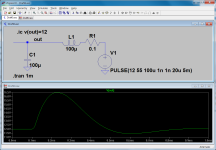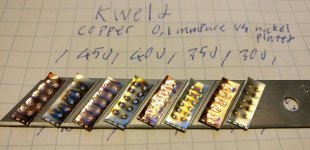crevettedragon
1 µW
- Joined
- Feb 2, 2019
- Messages
- 2
Thanks for the answers.tatus1969 said:Your bench power supply can be used, but there's one possible caveat: some power supplies don't like being backfed into their output when they are turned off, and can get damaged in the worst case. Many don't have a problem, but you should check that.
kCap has two 6mm holes to mount ring cable lugs coming from the power supply, but soldering them directly is also possible. The kit doesn't include connecting material for the power supply side, but everything else is included to start welding after assembly.
Good to know for the bench power supply backfeeding risk, I guess I will test and see, got the classic cheap Uniroi UC305.
As for connecting the power supply side, after examinating the part list of the kCap, your 6€ "kWeld – mechanical parts" should allow me to screw a m6 ring cable to the I+/I- of the kCap. I tend to avoid soldering when I can.
Thank you.






